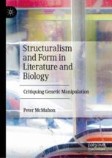Search
Search Results
-
Continuous Accessibility Modal Logics
In classical modal semantics, a binary accessibility relation connects worlds. In this paper, we present a uniform and systematic treatment of modal...
-
Prague Structuralism and the Poetic Function
Structuralism has impacted the humanities and sciences, including biology. A limitation of structuralist models is their static nature. Saussure’s...
-
Are Biology Experts and Novices Function Pluralists?
Philosophers have proposed many accounts of biological function. A coarse-grained distinction can be made between backward-looking views, which...
-
Form, Function, and Continuity: Knowledge on the Move
During historical processes, transformations are collectively carried out over a certain time span, and when examined over a long period they appear...
-
Wave Function Realism and Three Dimensions
It is argued that our experience of life in three-dimensional space can be explained by an ontological picture of quantum mechanics consisting solely...
-
Analysis of the Social Function and Value Realization of Art in the New Era
With the continuous enrichment of material life and the increasing improvement of spiritual life, the quality of life of people in the new era has...

-
Standard aberration: cancer biology and the modeling account of normal function
Cancer biology features the ascription of normal functions to parts of cancers. At least some ascriptions of function in cancer biology track local...

-
Slow Continuous Mind Uploading
In recent years, the idea of mind uploading has left the genre of science fiction. Uploading our minds as a form of immortality, or so it has been...
-
The function argument for ascribing interests
In the debate over the moral status of nonsentient organisms, biocentrists argue that all living things, including nonsentient ones, have interests...
-
Graph-Theoretical Representation of Systems and the Problem of Function
The discussion in this chapter comprises the relationship between complexityComplexity and systemsSystems explaining that while the...
-
Semiotic Function of Kabbalah Mystical Experience in the Interpretation of Historical Situations
These notes are the attempt to provide a semiotic interpretation of the Jewish mystical tradition of Kabbalah in the whole course of Jewish history...
-
Spacetime: function and approximation
Several approaches to quantum gravity (QG) signal the loss of spacetime at some level. According to spacetime functionalism, spacetime is...
-
The Structure-Function Relationship in the Advent of Biology
In the constitution of biology, organized and inorganic bodies could not differ only in composition and structural ordering. Organized bodies would...
-
Religions as Complex Adaptive Systems: Structure and Function
It is certainly challenging to attempt a complete description of even the main characteristics of complex systems. Therefore, I will only address...
-
Structure, Function and Evolution of the Middle Ear of Extant and Extinct Vertebrates: Paleobiological and Phylogenetic Interpretations
The study of the middle ear function is more difficult in extinct than in extant taxa, but a good understanding of middle ear evolution cannot be...
-
Proper Function and Ethical Judgment Towards A Biosemantic Theory of Ethical Thought and Discourse
This paper employs Ruth Millikan’s biosemantic theory of representation to develop a proposal about the function of ethical claims and judgments. I...
-
An Ethical Discussion of (Un-)Certainty at the End of Life: Exemplification by Means of Continuous Deep Sedation and Advance Directives
Uncertainty is a basic constant of medicine and health-care professionals’ decision-making. However, it is particularly apparent in the complex,...
-
A Logical Characterization of the Continuous Bar Induction
The continuous bar induction (\(\mathrm {c}\text {-}\mathrm {BI}\)) is an instance of the monotone bar induction (\(\mathrm {{M}}\mathrm {BI} \))...
-
Baroque Predication: “A Continuous Fresco, an Inner Concept, the Propositional Concept Itself”
“Baroque Predication: A Continuous Fresco, an Inner Conceptconcept, the Propositional Conceptconcept Itself” fleshes out the structural claim of the...
-
Reasoning Continuously: A Formal Construction of Continuous Proofs
We begin with the idea that lines of reasoning are continuous mental processes and develop a notion of continuity in proof. This requires abstracting...
